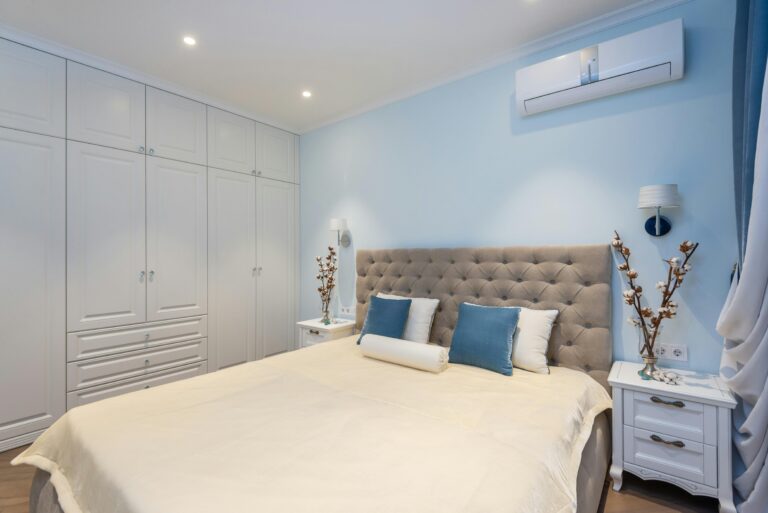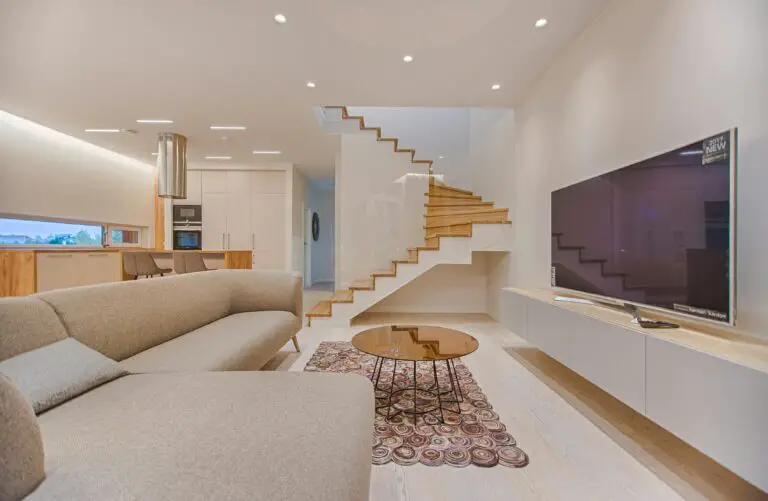When it comes to interior design, the power of color cannot be understated. Among the myriad color schemes available, monochromatic color schemes stand out for their elegance and simplicity.
In this comprehensive guide, we will delve into the world of decorating with monochromatic color schemes, exploring the fundamental principles, the psychology behind it, and how to apply this stylish approach to various rooms in your home.
Understanding Monochromatic Color Schemes
A monochromatic color scheme revolves around a single base color, with variations in shades, tones, and tints. It’s a design approach that relies on the inherent beauty and depth of a single hue to create a cohesive and visually pleasing environment.
How Monochromatic Schemes Work
The magic of monochromatic color schemes lies in their simplicity. By using different variations of one color, you can achieve a harmonious and elegant look. Lighter shades create an airy and spacious feel, while darker tones add depth and coziness to a space.
Psychology and Mood of Monochromatic Decor
Colors have a profound impact on our emotions and moods. Monochromatic decor can evoke a sense of calm, balance, and sophistication. Depending on the chosen color, it can create a serene oasis or a vibrant and energetic atmosphere. Understanding the psychology behind your color choice is crucial when embarking on a monochromatic design journey.
Benefits of Decorating with Monochromatic Color Schemes
1. Elegance and Simplicity
The monochromatic decor exudes an inherent elegance and simplicity. It’s a design choice that instantly elevates the sophistication of a room. The absence of competing colors allows for a clean and refined look.
2. Creating a Cohesive Look
One of the primary advantages of a monochromatic color scheme is its ability to create a cohesive and well-put-together space. When you stick to a single color, every element in the room complements each other, resulting in a visually pleasing and balanced environment.
3. Versatility and Flexibility
Monochromatic decorating is incredibly versatile. It can be adapted to suit various design styles, from modern minimalism to classic traditionalism. Whether you prefer a tranquil oasis or a bold statement, monochromatic decor can deliver.
4. Accentuating Texture and Form
In a monochromatic room, textures and forms take center stage. Without the distraction of multiple colors, you can appreciate the tactile qualities of different materials, from the softness of fabrics to the warmth of wood grain. This tactile richness adds depth and interest to your space.
Elements of Monochromatic Decor
1. Selecting the Base Color
Choosing the right base color is the foundation of your monochromatic design. Consider your personal preferences, the mood you want to create, and the room’s purpose. Soft blues for a serene bedroom, bold reds for a dramatic dining room, or soothing greens for a spa-like bathroom are just a few possibilities.
2. Variations in Shades and Tones
A monochromatic scheme relies on the subtle variations within a single color family. Experiment with lighter and darker shades, as well as different tones and tints, to create depth and visual interest.
3. Using Neutrals as Accents
While the primary focus is on your chosen color, neutrals like white, gray, or beige can play a crucial supporting role. These neutrals can be used for trim, molding, or accents to balance the monochromatic palette.
4. Incorporating Texture and Materials
Texture is a key element in monochromatic decorating. Introduce a variety of textures through textiles, furnishings, and decor items. For instance, combine smooth velvet upholstery with rough-hewn wooden furniture for a dynamic contrast.
Applying Monochromatic Color Schemes to Different Rooms
1. Living Room and Common Areas
In the living room, a monochromatic palette can create a serene and inviting atmosphere. Consider using soft neutrals like creamy whites, warm grays, or serene blues for a calm and cozy ambiance. Use varying shades and textures to keep the space visually engaging.
2. Bedroom and Relaxation Spaces
For a tranquil bedroom retreat, monochromatic decor can work wonders. Deep blues, soft lavender, or muted greens can create a soothing environment conducive to relaxation. Add plush textiles and layered bedding to enhance comfort.
3. Kitchen and Dining Areas
In the kitchen and dining area, monochromatic design can be surprisingly impactful. Crisp whites or vibrant reds can infuse energy into a culinary space, while earthy browns or grays can create a cozy dining atmosphere.
4. Bathroom and Spa-like Environments
A monochromatic color scheme is ideal for creating a spa-like bathroom oasis. Soft blues, cool greens, or serene whites can evoke a sense of calm and luxury. Incorporate natural materials like stone and wood for added texture and warmth.
Tips and Techniques for Successful Monochromatic Decorating
1. Finding Color Inspiration
Start by finding color inspiration, whether it’s from nature, art, or personal preferences. Collect swatches, images, and samples to help you narrow down your color choice.
2. Balancing Light and Dark Tones
Achieve balance by incorporating a range of light and dark tones within your chosen color family. This balance creates depth and visual interest while maintaining the integrity of the monochromatic palette.
3. Incorporating Pops of Color or Metallic Accents
While the primary focus is on your chosen color, consider adding pops of complementary or contrasting colors for added excitement. Metallic accents like gold or silver can provide a touch of glamour.
4. Using Patterns and Textures Effectively
Introduce patterns and textures to break up the monotony of a monochromatic space. Stripes, geometrics, or subtle prints on textiles can add visual interest without overpowering the color scheme.
Practical Considerations
Maintenance and Care of Monochromatic Decor
Monochromatic decor can be surprisingly easy to maintain. Many neutral colors are forgiving when it comes to stains or wear, and regular cleaning and upkeep keep your space looking fresh.
Budget-Friendly Ways to Achieve Monochromatic Design
Achieving a monochromatic look doesn’t have to break the bank. Explore budget-friendly options for incorporating monochromatic elements, from DIY projects to smart shopping strategies.
Conclusion
Decorating with monochromatic color schemes is a design choice that can elevate the aesthetics of your living spaces, creating elegance, cohesion, and a sense of calm. By understanding the principles of monochromatic decor, selecting the right base color, and experimenting with shades, tones, and textures, you can transform your home into a harmonious and visually appealing retreat. Whether you opt for serene neutrals or vibrant hues, the beauty of monochromatic design lies in its versatility and timeless appeal.
Frequently Asked Questions
1. How do you decorate in monochromatic?
Decorating in monochromatic involves selecting a single base color and using varying shades, tones, and tints of that color to create a cohesive and visually pleasing space. You can add depth and interest through texture, patterns, and a careful selection of accents and neutrals.
2. What does a monochromatic color scheme do to a room?
A monochromatic color scheme creates a harmonious and visually pleasing environment. It can make a room feel elegant, cohesive, and balanced. The absence of competing colors allows for a clean and refined look.
3. How do you use a monochromatic color scheme in design?
To use a monochromatic color scheme in design, start by selecting a base color. Then, experiment with variations in shades, tones, and tints of that color. Introduce texture, patterns, and accents to add depth and interest to your design.
4. What is monochrome decorating?
Monochrome decorating is a design approach that revolves around a single color, using variations in shades, tones, and tints of that color to create a cohesive and visually pleasing space. It emphasizes simplicity and elegance.
5. What are the characteristics of a monochromatic color scheme?
Characteristics of a monochromatic color scheme include a single base color, variations in shades, tones, and tints of that color, and the absence of competing colors. Texture, patterns, and accents play a crucial role in adding interest.
6. What are the advantages of a monochromatic color scheme?
The advantages of a monochromatic color scheme include elegance, cohesion, versatility, and the ability to create a harmonious and visually appealing space. It allows for flexibility in design styles and moods.
7. What are the benefits of a monochromatic color scheme?
The benefits of a monochromatic color scheme include creating a cohesive look, emphasizing texture and form, achieving balance and harmony, and making a space feel elegant and sophisticated.
8. What are the three main components of a monochromatic color scheme?
The three main components of a monochromatic color scheme are the base color, variations in shades, tones, and tints of that color, and the use of neutrals as accents or supporting elements.
9. What are the 5 monochromatic colors?
Monochromatic colors are variations of a single hue. There are infinite shades within each color family, but some common monochromatic colors include various shades of blue, green, red, yellow, and purple.
10. What is the best example of a monochromatic color scheme?
One of the best examples of a monochromatic color scheme is a serene bedroom decorated in various shades of blue, from pale sky blue to deep navy. The harmonious use of these blue hues creates a calming and visually pleasing environment.



